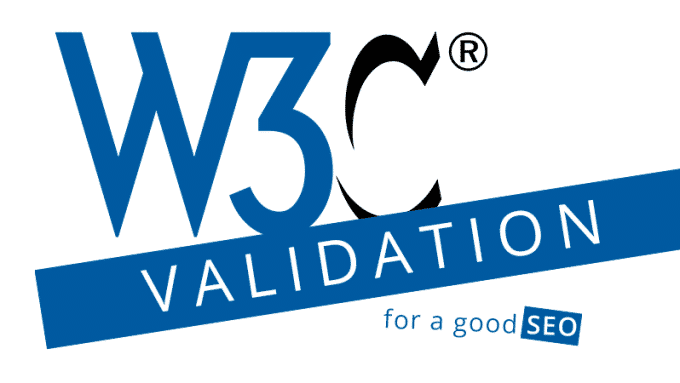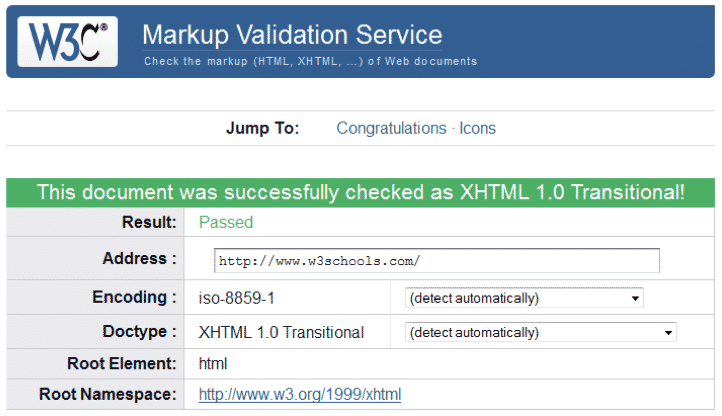W3C Monitoring: What It Is and Why It Matters
Your website creates its presence in the internet world with its language, source code, and domain. So, is everything up to the standards of the internet world enough? How will you do the audits on this issue? Are the documents on your website with different file types ready to be presented to the user in terms of their format, contents and size? Well, W3C monitoring is a service to answer all these questions and much more.
As Screpy, we ensure that you constantly test and optimize your website not only with SEO scores and Google Lighthouse audits but also in terms of comprehensive and fundamental W3C standards. Get information about our powerful and comprehensive W3C validator service now. To learn more and explore the Wide Web Consortium up close, keep reading, folks!
Try for free to boost your website traffic!
Defining W3C: What Is It Stand For?
W3C, also known as the Wide Web Consortium, is the set of must-followed standards set for the sites present on the Internet. So why was it necessary for the internet, offered as an international service, to have a standard?

- The Internet is used all over the world and is being developed and re-presented by thousands, tens of thousands of developers every day. Therefore, it is extremely important that a code used is perceived in the same way in all different browsers, that a coding language gives the same output, and that end-users get the same result from the same code snippet wherever they are in the world.
- All of this makes the internet accessible, open-source and always upgradeable. And also, international: Because in order to have an element in the internet world, no matter where you are, you have to use the same language with the same rules.
Relationship Between W3C Validation and SEO
Did you know that having your website presented to the public in a high quality way, meeting the basic W3C standards, is also an SEO requirement?

Let’s remember: what was SEO?
- The fact that your website is designed to care about the user’s experience so that the audience you address spends more time on your site.
- To be able to speak in their language so that search engines can notice this user-experience oriented features you offer.
Here, for every principle you see above, the value of compliance with W3C standards is quite high. Because W3C standards are a set of practices that directly affect the quality of experience your website offers to the user and strengthen performance and presentation metrics.
So now you know what WC3 Validation is and why monitoring tools would be very useful for you:
- Performing a software audit of your site from top to bottom,
- To detect W3C validation errors on different pages,
- To determine how to remove them and pass the audit.
This is exactly what Screpy does with W3C validation.
Test Your Website Issues
You can quickly analyze your site
What Does W3C Validation Include? – What Can You Get Under Control with W3C Monitoring?
There are a lot of questions you have to ask for W3C validation. Let’s examine them briefly.

- Applicability: We know that the internet world reaches the end user via a large number of browsers. There may be documents supported or not supported by different browsers today. A powerful W3C validation ensures that the source files you have on your site are supported by all browsers. -This is best to target anyone who uses the Internet in the world.
- Standartaziation: We have said that the main purpose of W3C validation is to create a standard that everyone can understand and use in common. Therefore, another question to be asked is: The documents on your website may be read and rendered by all browsers. So, are the outputs presented the same?
- Solution-oriented: Are there factors that prevent the rendering activity of the browser during the scanning of your content and pages, thus preventing your pages from getting rank and index?
So, while asking all these questions, did you know which files are examined within W3C validation? Honestly, almost all: HTML, XHTML, CSS!

Some of the basic W3C standards can be listed as follows:
- In particular, the URL structure is closely related to the W3C standards.
- The meta formats of each page on your site should be optimized.
- All of the characters, tables, text-oriented / visual, or table-oriented content on the websites should be published in accordance with the recommended coding language and protocols.
- Your website must have an infrastructure that can provide reliable data transfer.
- You should have a website that can be easily accessed on different devices and that can present its contents on different devices.
- To develop your website, you must generate the source code as an HTML file.
- You should make sure that your website has the necessary functions to suit disabled internet users.
Why is W3C Monitoring Important?
Since its founding by Tim Berners-Lee in 1994, the World Wide Web Consortium has become one of the greatest representations of universality in the web world. Thanks to this systematized standardization, the internet service around the world appeal to all users / browsers and their unique experiences. So why is this validation process so important? Let’s start to examine right now:
Rocket your ranking in search engines
W3C validation monitoring tool, your number one assistant in search engine optimization processes, means you can speak the language of Google and other search engines. You know how important UX is to search engines. A powerful UX is only possible with technical specifications that comply with universal web standards. That’s exactly why adapting to W3C in the design and coding process is actually a matter of ranking.

Provides accessibility
We said that a website that complies with W3C standards becomes an area that can be easily accessed through different browsers, right? Imagine how many browsers there are in the world. Firefox, Opera, Chrome, Microsoft Edge, or much more. Wouldn’t it be perfect for a website that could easily be accessed to produce UX-oriented output from all of these?
Ensures accessibility
It is excellent that the content you present on your website can be output in different browsers. So what will happen next? It is possible with W3C monitoring to make sure that your content files are accessible / viewable. It’s great to make sure that CSS, XHTML, and HTML files are served correctly and the same in every browser!
Optimizes the speed of web pages
Hey, we know how tightly page speed and UX go hand in hand, right? A study revealed that websites that are suitable for W3C can load 25 percent faster than others. So, let’s assume you have a table or a border on your web page. The file load between the table you add in accordance with the CSS rules and any table can vary between 25 percent and 50 percent.

This is a really high rate. Imagine how much this increased file load can increase loading time. A recent study reveals that users quickly start bouncing from the 3rd second. There are hardly any users waiting for a site to load for more than 20 seconds. This is exactly why the production of content suitable for basic file formats affects page speed, and page speed closely affects UX.
Updating and Maintenance Processes of Your Site Easier
The W3C standards actually enable your web page to serve in certain categories and make its internal organization easier to separate and work on. That’s why you can easily edit your site when there is a problem, without having to change it from top to bottom. Maintenance, update and modern usage possibilities are high in such sites.
Legally Valid
As you know, there are everyone you see around you among internet users: this includes individuals with disabilities. If you ensure that your site is optimized in accordance with W3C standards, you automatically ensure that it has such features. Remember, in many countries creating a website suitable for people with disabilities is not only a matter of UX-oriented design but also a legal responsibility.
Facts About W3C Validation – Explore the World of the Internet
We wanted to give you a few facts to get to know W3C better and understand the authority of this concept among web site owners worldwide. Let’s examine them:

- According to up-to-date statistical studies, even a 1 percent slice of the millions of websites on the Internet is not considered to fully comply with W3C standards. This is a pretty bad rate. Still, your compliance percentage can get you ahead. Check out Screpy’s W3C monitoring service and start testing your web pages.
- Did you know that even the biggest websites with the most traffic in the world are not fully W3C standards? For example, according to the measurements made in 2009, the official website of Microsoft gives 176 errors during the W3C monitoring process. In addition, 36 warnings are displayed. When we take a look at Facebook, we see 36 different errors and 6 different warning messages.
Regular optimization with a powerful W3C validator to have competitive power is one of the best things you can do for your website.
W3C Standards – Tags, Categories and Warnings
Let’s take a closer look at the W3C and see what you can access after the audits to be performed on your website.
First of all, common W3C standards are covered under the following labels:
- Accessibility
- CSS
- DATA
- DOM
- Graphic
- HTML
- HTTP
- İ18n
- Media
- Performance
- Privacy
- Security
- WEB API
- WOT
- XML
So, what are the most common mistakes and recommended practices to fix them within the framework of the tags above? Let’s take a brief look at it together if you wish.
Most Common W3C Validation Errors
The following common errors, especially in HTML, CSS and XHTML files, can cause the W3C validator tool to give warnings for your website. When we look at them from a broad perspective, they cause a decrease in the UX score on your site, decrease in page speed, increase in loading speed, and limit your chances of accessing your entire target audience. That’s why it can be very helpful to review the most common mistakes:

- You need to convert all of the special characters in your source code.
- You need to make sure that the URLs of the pages on your website do not contain any unencoded characters.
- You must add sub-attributes to each of the Images. This will be a problem if there are images with no attributes.
- Not having a Doctype document is a problem for your site.
- Missing / on self-closing elements can cause the source code to be detected incorrectly on your site.
- An element not closed may result in your page malfunctioning.
- Elements in inline elements should not be blocked. Doing so could cause the problem.
- Be careful not to start the class or IDs on your site with number.
- You should be careful not to use attributes such as “width” and “height”.
Of course, the errors that you may encounter as a result of W3C monitoring are much more than that. We usually wanted to list the most common mistakes for you. If you want to discover more, it might be time to start audit with Screpy’s W3C monitoring tour. Start gaining maximum control over your site now!
W3C Perfect? – Criticism of the W3C
Of course, W3C, which is a protocol developed for universality in internet use rather than the internet itself, can also receive various criticisms. Let’s give you a rumor about this.
In 2012 and 2013, W3C made a new recommendation on their website. W3C, which asked websites that want to follow the standards to add Encrypted Media Extensions (EME) to HTM5, faced a lot of criticism. According to some, using this plugin poses a problem, especially in the following ways:
- openness
- interoperability
- vendor neutrality
Electronic Frontier Foundation resigned from W3C at the time of the above-mentioned discussions. Of course, these discussions are quite a thing of the past. Today, however, it is possible to say that the standards offered by W3C are very important for ranking and user experience.
FAQ
What does W3C validator do?
This monitoring tool, offered by Screpy, checks all the documents on your web page and examines them according to W3C standards. If you edit the resulting errors by following the tasks, you may have obtained a website that complies with the general standards.
Why to use W3C validator services?
The W3C validator makes it possible to achieve better scores in many areas, from website speed to user experience. This is exactly why it is possible to say that a website that complies with W3C standards at the maximum level will naturally be lucky in ranking. Moreover, in basic categories like security, accessibility, speed, SEO VE W3C demands the same things.
Why is validating a website important?
Because the fact that your website is valid means that it can be found and loaded by all browsers around the world. This means a wider audience of users you can address. Also, validation will mean that all browsers will detect and load files on your site in the same way. This means a standardized experience.
How do you validate a URL?
If you want to make your URL valid according to the W3C standards, examine the following items one by one and check:
1. In order for your URL to be secure, it must begin with HTTP or HTTPS.
2. Your website should have www at the start of your website (which means world web consortium anyway)
3. Make sure that the last part of your URL is a top-level domain. For example, some of these can be listed as com, org, net.
How do I validate my website?
Pretty easy! By using Screpy’s W3C monitoring service, you can easily and quickly check the pages on your website and start optimization studies by examining the warnings.
What are W3C standards?
The W3C standards are basically a set of protocols aimed at enabling users and developers to have an interactive website experience, secure data transfer, and access via different devices. You can reach the details of them by reading our content.
How do I check a 508 compliance?
In order to check Conformance to the Revised 508 Standards, it will be sufficient to use the W3C monitoring service via Screpy.
Test Your Website Issues
You can quickly analyze your site